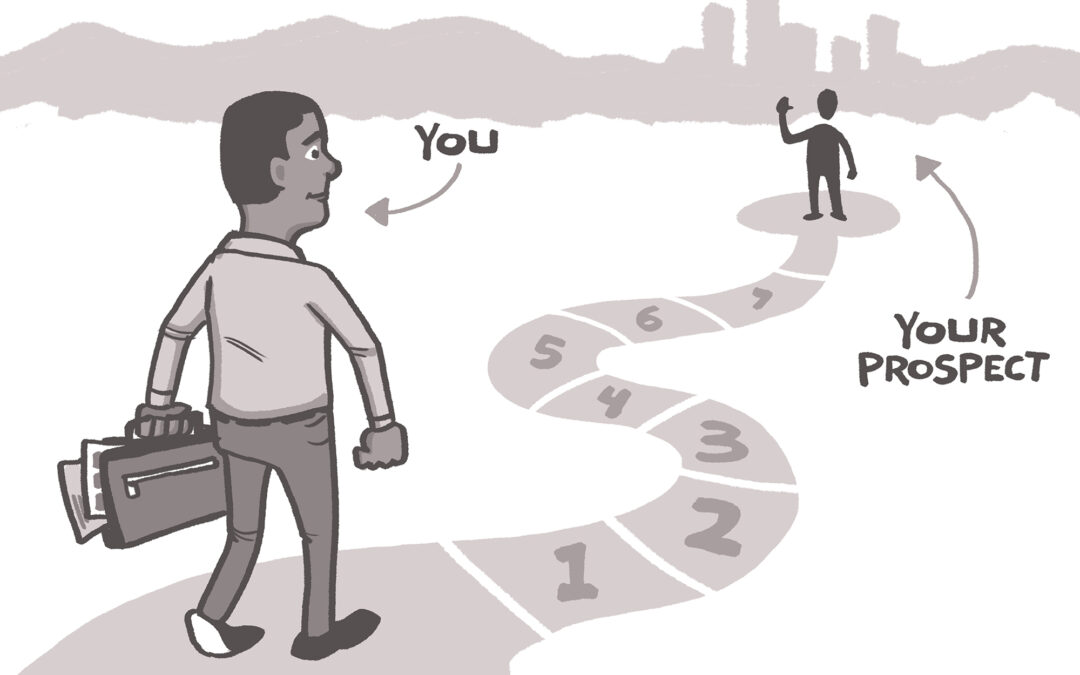
4 Things Creatives Must Do After a Sales Meeting
If you missed my original blog post called “7 things Creatives Must do Before a Sales Meeting”, take a moment and go back and read that.
Here you are. You just finished meeting with a potential client or customer. Although you haven’t booked the work just yet, the prospect is interested in next steps. Aside from the obvious (which is to write a proposal and send the prospect your proposal), there are five things you should do to help increase your odds of landing the deal.
- Send a Recap Email. The second you get home—literally the second, before you do anything else—draft a recap email to send to your prospect. First of all, say thanks to the potential client for offering his or her time to meet.
“Hey Mark, thanks so much for taking the time to meet today! I know your time is valuable, so I really appreciate you setting aside an hour to talk.”
Then, recap what you discussed in a few simple statements:
“I loved hearing more about your design project idea. I agree with you that your business would benefit from having an expertly designed overview brochure. I love your suggestion about having it be highly visual over highly text-based.”
Then, tell them what are your next steps, and when they can expect these next steps.
“From here, I will draft a proposal based on your request and will get it to you by end of day Thursday. Does that work for you?”
Finally, thank them again and indicate your desire to earn the business:
“Thanks again. I really hope we get the chance to work together. This looks like a great project!”
Boom. Now you’ve sent an amazing recap email. The prospect feels valued, they know you were listening during the meeting, and they know when they can expect to receive the follow-up.
- Block off Time to Write the Proposal. This is key. Now that you’ve made a promise about when the potential client can expect your proposal, block off time to actually work on it! You don’t want to set expectations around time and then miss your own deadlines. I’m a big believer in time-blocking, where you actually fill up your calendar with blocks of time dedicated to working on specific tasks. Make sure you schedule in some time to work on your proposal.
- Dig Deeper. Don’t just write a proposal…dig a little deeper. You may have a very easy proposal-writing process or a very simple offering, but take some time to learn more about the project and the client. Research the potential client and their company. Learn about their brand. Learn about their values and mission, if it’s available.
Look up examples that the prospect may have mentioned during your meeting. Become more familiar with the specific project request and find ways to integrate what you learn into your proposal.
Depending on the nature of your business, you may have more or less room for customization. If your business offers a highly customized product or service, customize the heck out of your proposal.
- Send the Proposal…Early. This is the cherry on top. Nothing is more amazing to a client to receive something early from a vendor. It’s almost unheard of. You will knock your prospective client’s socks off by sending them their proposal a day early.
It’s important to only send it a day early and no earlier. Why? If it’s too early, then you communicate that you aren’t good at projecting time, you have nothing else to do, or the work of putting together the proposal was easy. This all may be true, but you don’t need to share this with your potential client! Just sent the proposal a little bit early, so they feel like they are getting a little bonus.
In fact, I like to subtly indicate that early nature of the proposal:
“Hey Mark, good news! I was able to get the proposal to you a little bit ahead of schedule. Please find it attached…”
By receiving the proposal early, the client will get the impression that you are on top of your game and that you will likely get the actual work done on time, as well. Always under promise (or, rather, regular-promise) and over deliver.
Although none of these tips are rocket science, you would be shocked at how many creative freelancers, vendors or businesses get this stuff wrong. Next time you wrap up a sales meeting or call and are hoping to book the work, take time to do these four things.

